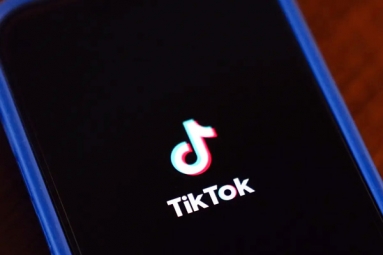
(Image source from: Economictimes.indiatimes.com)
Many individuals in technology communities are currently posting a specific chart on social media. This chart illustrates the flow of investments made by certain companies in artificial intelligence to one another. Within it, we can spot several prominent tech firms such as Nvidia, a giant valued at more than $4 trillion, along with OpenAI, Meta, Google, Microsoft, Oracle, Amazon, and various others. Recently, these companies have been investing in each other, either directly or through various business transactions. The impact of all these agreements has been remarkable, at least on paper. A widely discussed report indicates that the AI sector contributes nearly 40 percent to the total GDP of the United States. On Wall Street, shares of AI firms have accounted for 80 percent of overall growth this year. Harvard economist Jason Furman argues that if we exclude investments related to AI, the GDP growth in the US so far this year is roughly 0.1 percent. In essence, there’s almost no growth.
While this data sounds positive, it is important to consider if there is any actual revenue and productivity resulting from these investments. Until now, such results have not materialized, and they probably won’t for a while. Essentially, this surge in AI and its surrounding business appears to be a significant bubble, resembling the Dot Com Bubble from the late 1990s, but even larger. So much so that Michael J Burry — known for his predictions during the Big Short — has taken a financial stance against AI. So, is AI truly a bubble? Is the excitement around AI genuine? Will we actually witness “hundreds of billions” in revenue from AI, as predicted by OpenAI’s CEO Sam Altman by the year 2030? While I have some rough thoughts and feelings about these questions, I don’t really consider myself qualified to make definite claims. However, regarding the technical aspects of AI and its potential, I feel more confident. From my perspective, the current excitement about AI is indeed a bubble in numerous respects. Yet, in other aspects, it may not be.
Firstly, it is evident that the current excitement around AI is driven by easy access to money. A tweet that went viral a few weeks ago from 2016 helps illustrate this. It was taken down along with the account that posted it after it gained attention earlier this October. This tweet stated, “Fed plan is to print till general AI is developed.” The reason it gained traction is that what seemed like a ridiculous idea back in 2016, before ChatGPT existed, appears strangely insightful now in 2025. The US government has indeed been busy printing money over the years, and a significant portion of this money has been funneled into the tech sector since 2020.
And as Edward Chancellor mentions in his book The Price Of Time, which discusses finance and economic bubbles, “easy money leads individuals to fund projects that promise returns far into the future.” In this light, much of the excitement surrounding AI is akin to the past excitement related to shipping and global trade from the South Sea bubble, railroads, Dot Com boom, and the housing market. Many individuals and corporations possess cash — easily accessible cash — and are eager to invest it. AI appears to be a top choice, especially since there is little urgency right now to produce immediate returns. It revolves around future potential, creating a self-sustaining cycle where influential figures in Silicon Valley, like Sam Altman and Jensen Huang from Nvidia, are elevating AI’s profile dramatically. This increased enthusiasm leads to even more investments, which further amplifies the AI hype.
Everyone is banking on what lies ahead. The technology itself is indeed impressive but is not yet at a point where it can substitute for human workers or revolutionize our lives in a way that explains the trillions being invested. So, AI stands as a speculative bubble that could burst. People might be placing unrealistic expectations on it, attributing abilities to it that it does not possess. ChatGPT is not divine or mysterious intelligence. At least not yet. It might never achieve that status. Without a significant technological breakthrough, this bubble is destined to burst. This year? Next year? Or in two years? We can’t predict that. Ultimately, it’s uncertain when bubbles pop. We only know that they will. This is one aspect of the AI narrative, the one taking shape in financial sectors. There’s also another dimension to consider, similar to how the Dot Com Bubble had two sides. This is the tech side, and it’s quite solid.
In a sense — as I have discussed before — AI, represented by systems like ChatGPT and Gemini, is still in its early stages. It resembles the IBM Personal Computer from the early 1980s. That machine was powered by the Intel 8088 chip, which operated at just 5 MHz and ran early Microsoft DOS software. In comparison, think about the iPhone you carry today, equipped with impressive voice-activated operating software. The current iPhone is also nearly 100000 times faster than the most advanced supercomputers from the 1970s. Alternatively, you might view the present state of AI like the early World Wide Web from the 1990s. Back then, the internet was much more limited and simplistic compared to the remarkable web we have today.
The Dot Com Bubble actually gives us a clue about where current AI technology is headed. Even though the Bubble popped, Google didn't disappear. On the contrary, the technologies that Google first developed ended up ruling the world. While Netscape and AOL might have disappeared, the WWW continued to thrive. It has grown into the technology that supports almost everything in our modern world, from apps to every kind of digital service.
AI will likely follow a similar path. However, this story is only starting now, and it will take several decades to fully unfold. As a basic technology, Large Language Models are incredibly interesting and incredibly powerful. They will be integrated into every aspect of our world in the years ahead. They will evolve into the platform through which everything operates. AI is already advanced enough to be used for this purpose. However, putting it into practice will require time. There are complexities that need to be addressed, and some may even be impossible to resolve. There will need to be innovations along the way before anything becomes feasible, and some innovations — like the way Fusion Energy has developed — might prove difficult to achieve. But there is no question that AI will be a vital element of our lives in the next 20 to 30 years.
However, it's also simple to see that the current bubble will burst in the meantime. Just as it has happened many times before. Railways may have transformed the world, but they also experienced their own bubble that burst. The same thing happened with the WWW. And the same thing will occur with AI. But the bubble does not involve the technology itself. It is a feature of our financial system, which is becoming increasingly separate from the real world that ordinary people live in. As a core technology, AI is genuine. Even if the story being told to us now about it will probably turn out to be made up.







